- Administrator
- Albums and Singles
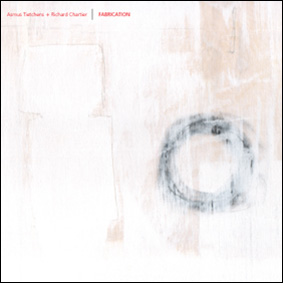 A cross-generational collaboration between these two giants of the world of esoteric sound manifests itself exactly as would be imagined, and for the listener who is willing to give it the close attention it requires, there are great rewards.
A cross-generational collaboration between these two giants of the world of esoteric sound manifests itself exactly as would be imagined, and for the listener who is willing to give it the close attention it requires, there are great rewards.
Beginning as an open collaboration project by Chartier to work with other artists in manipulating is Postfabricated album for its reissue in 2003,Tietchens continued to work with this source material and eventually approached Chartier to work together on it as a formal collaboration, hence this single, 51 minute piece, "Fabrication." In addition to the album, Die Stadt has seen fit to include Prefabrication, a second disc of the full material Tietchens reworked for the original Postfabrication project as well, which is similar in approach, but stands alone.
The piece opens, unsurprisingly, in near silence. Eventually subtle swells of glacial tones being to appear faintly in the mix, then ringing chimes and what could almost be a cello somewhere off in the distance. The austerity of the work makes for some interesting side effects: As I am writing this review now and listening yet again in a moderately busy café, I am catching myself rewinding the track to see if that was a little bit I had missed before, or just someone's cell phone a few tables over. I'm batting about .500 on that, so it is an interesting effect to say the least.
"Drift" would be an excellent single word summation of this work, because there's a sense of sounds just floating in a vacuum on their own inertia, something simple that continues on and on with subtle variation. Once in awhile a more recognizable sound rears its head, a buried digital click, glitch sounds that could be crickets or part of a field recording of a different universe.
The 11 tracks that make up Prefabrication are more in line with Richard Chartier's solo work than the strict minimalism of Fabrication. Throughout the pieces a sense of traditional rhythm is frequently found, but painted from a pallet of quiet clicks, skipping CDs, and data errors. Most normal people would not be able to dance to it, but the patterns are obvious and clear. The non-rhythmic tracks also have their own character as well, the digital water-fall sensations of the fourth track, and the shrill, tinnitus inflicting tones of the ninth track stand out especially.
No one would expect this sort of collaboration to have a major crossover appeal, and I doubt either artist had such motivations in their heads when they began to work on this collaboration. But regardless of that, Tietchens and Chartier have made another wonderfully complex electronic work that is sure to be a high point in both of their discographies for a while to come.
samples:
Read More
- Administrator
- Albums and Singles
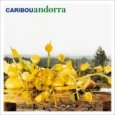 This album was a hard one to get, but when I did, I was blown away. It is dense and flowery: a striking transistion from Caribou's earlier style, but still definitley sounds like Caribou. Andorra is a big move forward for Dan Snaith.
This album was a hard one to get, but when I did, I was blown away. It is dense and flowery: a striking transistion from Caribou's earlier style, but still definitley sounds like Caribou. Andorra is a big move forward for Dan Snaith.
I recently caught a documentary on VH1 on the making of Phil Collins' fist solo album, Face Value. There was one scene where Collins and an engineer were sitting at the mixing board pulling apart the tracks of Phil's cover of The Beatles' "Tomorrow Never Knows" revealing layers of backwards violin tracks, some pulled from other songs on the album, hints of other melodies floating into the final mix of the song. Andorra sounds like Caribou's Dan Snaith was given access to the master tapes some of those opulent multi-track classic rock albums and allowed to pick and choose the most surreal elements to build his songs out of. There are ghostly melodies hinting at other songs here and there, but with Snaith's focused, dense layering of sound and his new addition of beautiful multi-part vocals, Andorra sounds more like a lost Elephant Six album than anything else in the Caribou back catalog.
From the album's opening, "Melody Day," we're hit with a 4/4 beat, light guitars and pianos. This light psychedelic pop is far from the cherubic and ecstatic post-techno Snaith started out with, but at the same time, it is a logical extension and conclusion of his oeuvre. The next track, "Sandy," pushes this new approach to '70s psych-lite vocal pop. It is simply arranged with the drums and a high register bass line up front, and the synths and electronics pushed to the back of the mix, and capped with a heavy vocal melody. And damn that chorus, I don't think The Mammas and The Papas could have ever sounded this good.
It's not until the third song, "After Hours," that that Snaith gets back to his familiar syncopated, polyrhythmic style that made Milk of Human Kindness so powerful. But as the song progresses, that intense drum attack is traded in for softer airs. The drums are heavy and up front in the mix, but serve more to pull the listener in to subtler guitar and synthesizer work. If I were still a college radio DJ, this would definitely be the track I would pick as a single to play, but I know that more people are going to gravitate to the lusher vocal styling this album has to offer. Caribou is shifting from being a "player's" band and becoming a "songwriter's" band.
Snaith has grown out and away from his isolationist beginnings, where he made music in his rural Canadian home and is blossoming into a fantastic song writer. The album is dense and a drastic transition even from what …Human Kindness was two years ago. I thought of myself as a Caribou fan, and found this CD hard to absorb. It takes a while, but it is immensely rewarding after several listens.
Andorra is a rare kind of album. It is intricately assembled, the songs move through their own climaxes and denouements like a play. Snaith has arranged the songs as to compliment each other and display their strenghts in shared themes. A lesser artist attempting such a bold album as this might have failed in the ordering of songs. Snaith dosen't let the best material pile up on one half of the album, nor does he lump all the more divergent material together. He built Andorra up slowly, teased us with what was coming, and at the end, leveled the room with an insurmountable expression of beauty and joy.
The album opens beautifully and strikingly, Snaith showcases his voice and a new found love of pop sensibility. The middle dives deeper into '60s pop, sounding as golden and bright as any imaginary summer afternoon could be, and all the while still sounding like Caribou. "Eli" stands out in this bunch with a heavy one string guitar riff and a children's choir, it may be the most shocking song on the album. It is so far from anything I'd imagine Caribou to come up with and so deep into the vaults of classic American pop. As immediately divergent as the first two thirds of the album sounds, Andorra's closing is a refreshed return to form, "Sundialing," sounding the most like earlier Caribou out of all the songs, "Irene," a soft ballad with a cool, bubbly vibe and wispy drum machine, and the closer, "Niobe," is just mind blowing: nine minutes of intense building and release. As most of the CD explored earthy California psychedelia, "Niobe" is a launch into space. It is the most minimal song on the disc: drums fading in and out, fills punctuating the song, marking out points for the dense layers of electronics to shift, start and stop. Where most of the album focused heavily on the vocals, "Niobe" shifts away from the pop harmonies to subtler repetitions of a few lines shifting in and out of the mix. "Niobe" closes this daring and adventurous album with what might be the best song of Dan Snaith's career.
samples:
Read More
- Anthony Locke
- Albums and Singles
Here is a man at the absolute cutting edge of Highland bagpipes. His pioneering work with the traditional Scottish instrument will appeal to both fans of academic / avant garde experimentalism as well as sonic explorers of noise / drone who could also get a buzz from this. His approach to the instrument is completely unconventional, highly original and relentlessly inventive. It creates an almost meditative atmosphere that resonates around the skull and transports me into tartan space.
Track 4 has a consistent drone sound while layers of bagpipes weave a magical state of sonic bliss. Long, drawn out, magical bagpipe tones which are perfect for late night headphone immersion. It is real joy to these ears (perhaps it connects with my Scottish heritage) and highly recommended. It's a genuine thrill to listen to something so unique both in its ideas and delivery.
The second disc in this 2 CD set comprises of eight untitled pieces of music for acoustic and electric guitars. Because of the diffence in his choice of tools the sound is clearly different yet Watson's approach to the composition is, in many ways similar. Using an original cassette recording from 1987 as the foundation of these pieces he uses recordings from eight years later to create a wide spectrum of sonic feelings which range from a sinister, un-nerving feeling. slightly melancholy at times and almost euphoric at others. The beauty is in the simplicity of each individual parts excecution, however as various layers are overlaid the sound becomes more rich and complex. There are small intricate parts along with subtle effects and drones balanced very low in the mix whilst at the fore are gorgeous improvised acoustic guitar parts that hint at Derek Bailey, Richard Bishop, Jim O'Rourke or possibly even James Blackshaw on the occasional moment. Watson has created a genuinely interesting and emotionally captivating set of tracks, full of warmth, personality and unorthadox dynamics.
Although the second disc (Sinister) is a rewarding listen, it is the first (Dexter) that stands out and grabs the ears attention, simply beacuse it is difficult to access releases by anyone experimenting with bagpipes in this way. It makes for an ultra fresh approach to an almost forgotton instrument. It is marvelous stuff.
Read More
- Matthew Amundsen
- Albums and Singles

Read More
- John Kealy
- Albums and Singles
Temporary Residence Limited / Hydra Head
The Jesu side is a bit hit and miss. There are some fantastic moments on this LP by Broadrick that further reinforce his current reputation for being Mr. Shoegaze for the new millennium such as "Farewell," a lush pop song: waves of synth lapping against a throbbing bass line, all the while Broadrick sings with a detached monotony. However, the other two songs, "Blind & Faithless" and "Why Are We Not Perfect?," are good but more like off cuts from the other Jesu releases. The music is pleasant but for me it is all a little too Jesu-by-numbers.
The Eluvium side contains a single, lengthy piece by the name of "Time-Travel of the Sloth" and is divided into three parts (although it's hard to decide where one part ends and another begins). The music is slow and hangs in the air, pregnant with anticipation. It is droney and indistinct plus it is hard to tell what instruments are being used. The sound warbles like it was recorded onto tape decades ago and is only being unearthed now. The piece climaxes with a surge of power; it sounds like a jet taking off (or a sloth ripping through the space-time continuum).
There seems to be another rake of Jesu releases planned for later in the year and hopefully the slightly dull songs from this LP are not an indication of how they will sound. I have enjoyed Jesu so much up until now that I am confident Broadrick will deliver the goods but this release has cast some doubts into my mind. As for Eluvium, this is definitely one of the best things I have heard from Cooper, it is too bad it was not included on the recent album Copia but the epic piece might lose something when shoved into the middle of an album. So while this split LP is not entirely indicative of both artists, it certainly is worth a listen for fans of either outfit.
Read More
 Full of top-shelf songs, this disc gets at the heart of what a culture-based compilation should be. It is eclectic enough to adequately represent a nation's worth of musicians and singers, but unified enough to present a cohesive listening experience.
Full of top-shelf songs, this disc gets at the heart of what a culture-based compilation should be. It is eclectic enough to adequately represent a nation's worth of musicians and singers, but unified enough to present a cohesive listening experience.
- Administrator
- Albums and Singles
 This album more than lives up to its visceral title. It contains some of Bishop's most intense and downright ugly work to date as a solo artist, but also some his most sublime. Bishop willfully defies the traditionalist and academic conventions of solo-guitar work, offering both examples of controlled musicianship and malevolent noodling.
This album more than lives up to its visceral title. It contains some of Bishop's most intense and downright ugly work to date as a solo artist, but also some his most sublime. Bishop willfully defies the traditionalist and academic conventions of solo-guitar work, offering both examples of controlled musicianship and malevolent noodling.
Locust
"Zurvan" begins with the bold strumming that characterizes this album. After those opening measures, Bishop's playing quiets down, modulating with intensity before he launches the tempo into double time. The track's namesake is the aloof, primordial creator god in ancient Persian mythology, but this track is anything but aloof, it's practically manic. It's tough not to imagine some kind of vicious cyclone or insane dervish spinning round in some desert wasteland. But as wild as the playing sounds, it is tightly controlled. Bishop executes lightning quick rhythm changes with ease, holding a chord, then launching back into furious strumming. This see-saw effect amps up the tension until the guitar strings are at the point of breaking.
"Smashana" does not have the speed of "Zurvan," but it certainly keeps the malevolence. Bishop ditches acoustic flourishes here in favor of a slow industrial grind. Multi-tracked electric guitars twang and roar, noodling around randomly without coalescing into any particular structure.
The Mahavidya of the last track are the 10 female aspects of the god Shiva. They personify everything from decay and murder to sublime beauty. It's hard to find a more apt description for Bishop's work, either by himself or with the Sun City Girls. On that continuum "Mahavidya" is definitely on the sublime side, especially after the fit that is "Smashana". The acoustic guitar returns, floating over the gentle drone of a taboura. Bishop's playing cycles over the same peaceful theme over the course the song's twenty minutes. The beautiful melody and subtle variations gracefully keep the song from sounding stale or simplistic. The notes are plaintive and high, like a supplicant at prayer. The tempo quickens, as in Zurvan, but much more gradually, never reaching the same level of agitated intensity.
Even if the individual pieces of this album very different, the album itself fits quite well into a narrative whole. It builds itself into a fury that dissolves into the droning bliss of the last track. The spite stored in its first half clears out to a tranquil Nirvana. Though Richard Bishop has doubtless more bile to spill, this chapter has at least a peaceful ending.
samples:
Read More
- Administrator
- Albums and Singles
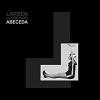 Larsen have always been at odds with most of their contemporaries, almost mythical stories about getting signed to Young God Records, a tribute album to Autechre that features no computers and no obvious references to the band or their music and all sorts of strange rumours abounding about the members of the group. However, the live album/DVD ABECEDA sees them cement their reputation as serious artists (minus any negativity that concept might carry with it). ABECEDA is a well-thought out concept delivered with care and finesse by Larsen and their friends. Musically it is as strong as any of their previous efforts and visually it stands out on its own.
Larsen have always been at odds with most of their contemporaries, almost mythical stories about getting signed to Young God Records, a tribute album to Autechre that features no computers and no obvious references to the band or their music and all sorts of strange rumours abounding about the members of the group. However, the live album/DVD ABECEDA sees them cement their reputation as serious artists (minus any negativity that concept might carry with it). ABECEDA is a well-thought out concept delivered with care and finesse by Larsen and their friends. Musically it is as strong as any of their previous efforts and visually it stands out on its own.
Despite Larsen expanding to the size of a small orchestra for the occasion, the overall sound that they have developed over the years remains intact, all their collaborators staying true to the group's aural aesthetic. The set begins with wind-like drones care of Jóhann Jóhannsson on laptop. From here, the familiar slowly plucked guitar, glockenspiel and hypnotic rhythms of Larsen weave in and out for an hour. David Tibet sounds as comfortable here as he has ever sounded, his words an homage to Karel Teige's Alphabeth, 1926 rather than a direct translation. The addition of Baby Dee and the return of Julia Kent to Larsen's ranks works a treat, both artists playing sympathetically to the band. Of particular merit is Dee's piano playing later on in the performance, a fragile and haunting melody that sings through the mix.
As beautiful as the music is, it is the visuals that accompany ABECEDA that is most impressive. The sleeve and slipcase combine to make a very attractive, elegant package; the monochrome exterior opening up to reveal color stills from the DVD and Tibet's text. The DVD itself is a combination of delicately shot live performance with a video collage of a dancer interpreting letters of the alphabet with her body and layers of typography complimenting and supporting her movements. With Larsen's music and Tibet's vocals (which are sporadically spaced throughout the performance), the visuals become sublime. Teige's original Alphabeth was produced as a book (and reproduced as a slideshow on the DVD) but the effect of combining a film collage with a dancer on stage brings the concept fully alive, letters not being simple symbols isolated and unmoving on a page but constantly shifting characters bringing language to life. This incorporation movement also acts as a nod to Italy's Futurism, ABECEDA sitting comfortably next to the sculptures of Boccioni as celebrations of the human body in motion.
Needless to say, this is a mesmerising release. Everything about ABECEDA is perfect: the production is crystal clear and the DVD is masterfully cut. It has been most definitely worth the couple of months delay in its manufacture, some good things come to those who wait. With any luck Larsen and Friends will tour this more than the handful of dates that they have played/will imminently play. It is rare to find an album that is so wonderfully complete feeling, every aspect of the release getting all the attention needed lavished on it to make ABECEDA the jewel in Larsen's crown. In all honesty, I doubt that they could have gone into the studio and made a better album. Now, to dive into ABECEDA all over again.
samples:
Read More
- Administrator
- Albums and Singles
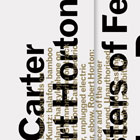 Tom Carter has been one of my favorite guitar players for several years now. Outside of the particular skeletal trance-blues style that he has perfected in work with Charalambides, Carter's many many solo and duo recordings carve out a truly unique improvised guitar method, blending extended technique, purist drone logic, trance minimalism, and a beautifully impure psy-punk energy befitting collaboration with many of today's lo-fi drone or psychedelic noise currents.
Tom Carter has been one of my favorite guitar players for several years now. Outside of the particular skeletal trance-blues style that he has perfected in work with Charalambides, Carter's many many solo and duo recordings carve out a truly unique improvised guitar method, blending extended technique, purist drone logic, trance minimalism, and a beautifully impure psy-punk energy befitting collaboration with many of today's lo-fi drone or psychedelic noise currents. Lately, Carter's most fruitful collaborator in the latter realm has been Robert Horton, an old-school SF-scene improviser and experimenter who has gained more of a rep in recent years due to increased productivities from his home studio, something of a lab with its collection of homemade instruments and sound-grabbing technologies. Extensive overdubbing or studio sound collage is not something Carter has explored too much on his own, and I often feel that the fully hands-on approach that he has been emphasizing on solo recordings lately (very little delay or signal damage) is essential to a lot of the delicate power and immediacy of his best works (Sun Swallower, Whispers Towards Infinity).
For this reason, I have tended to de-emphasize the Horton discs when dealing in prolific Carter strata, favoring the solo discs' thready, purer bolts into the void over the more murky, turbulent coilings of Horton's more collage-oriented sound . That said, I'm hearing a lot more open, or at least patiently blissed-out spaces on this new one: lanquid, eastern wanderings, chimed with gamelan percussion and sanded fine with stacked ebow magic. Carter's guitar gets a lot of the volume; his playing is truly "interrogating," figures and overtones not so much teased as built out, hammered or gracefully strangled from the instrument. The quiet hardware of the roomsound, metal and string and electric waves can be heard, brought into range by Horton's tape master, tightly blanketed and buzzing with the insectoid flutter of sampled sound.
Monsters of Felt maintains a quiet roar of ascent and submission throughout, never too scattered or too obsessed with its details, but altogether honoring an aesthetic of environmental sound collision and joyful exploration. It leaves me excited for more from Preservation Music (whose Motion compilation of Australian sound art I still spin often) and anticipating more Horton/Carter collabs, like the new one on Three Lobed under the name Turnstone.
samples:
(coming soon)
Read More
 Another reissue from the Les Disques du Crepuscule back catalog, The Fruit of the Original Sin is a two-disc compilation appropriately subtitled "A Collection of After Hours Preoccupations." While there isn't anything overt that these tracks have in common, many of them share a tinge of melancholy and beauty in equal measure, qualities that are especially noticeable late at night.
Another reissue from the Les Disques du Crepuscule back catalog, The Fruit of the Original Sin is a two-disc compilation appropriately subtitled "A Collection of After Hours Preoccupations." While there isn't anything overt that these tracks have in common, many of them share a tinge of melancholy and beauty in equal measure, qualities that are especially noticeable late at night.
- Administrator
- Albums and Singles
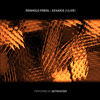 The idea of an orchestral approach to the electronic and tape compositions of Iannis Xenakis may seem like an absurd endeavor, but it works, extremely well.
The idea of an orchestral approach to the electronic and tape compositions of Iannis Xenakis may seem like an absurd endeavor, but it works, extremely well.
Reinhold Friedl and his orchestra Zeitkratzer are no stranger to taking a unique approach to "difficult" compositions: one of their recent contributions has been an orchestral take on Lou Reed's Metal Machine Music. In this case, there is no single specific Xenakis composition the group takes on, instead, it is a "tribute" to the late Greek composer's legacy. This live performance then attempts to capture the mood and feeling of his electronic and tape compositions, all largely studio treated works, and recontextualize them into a traditional orchestral setting.
Indexed as a single, 54 minute track, the eight performers of Zeitkratzer come out swinging, a mass of swirling horn shrieks and groans mixed with low nauseating bass string drones. The dense mix adds in rattling chimes and a percussion section that resembles the abuse of a metal chain. The high end of the horns swells to almost resemble the horn section of some of Peter Brotzmann's most dissonant work, combined with a constant, underlying bassy tumult.
Brotzmann and other free jazz luminaries are not a facetious point of reference for this work, as the horn sections often reach that sonic abuse level of chirps and squeaks. As the track continues, the pitches seem to constantly vary and though the mix never relents, it always feels dynamic and unpredictable. Later on the percussion section becomes a rattling of metal and mechanical failures, an industrial disaster just waiting to happen. There is a loss of identity among the various instruments as the track draws to its conclusion, everything congealing into a thick monolith of dissonant sound. As the piece comes to its abrupt conclusion, one would forget that it was actually a live performance unitl the massive surge of applause that concludes the disc.
Asphodel has seen fit to not only include the audio document of this, but a video one as well, consisting of a full length film by Lillevan based upon photographs and video of Persepolis, Iran, a location Xenakis was especially fond of. The dynamic, bronze-hued abstract imagery of the film make a perfect accompaniment to the sound. As an added bonus, there is also an option to listen to the audio in 5.1 surround sound as well, which makes for an even more disorienting, and fascinating, listen.
What may have seen like a quixotic undertaking at first instead shows that even as complex as Xenakis' studio compositions can be recontextualized into a very different setting with success. It also proves that what may seem like utter chaos at first is actually a very controlled, extremely structured sound…a conclusion that would surely make Xenakis smile!
samples:
Read More

